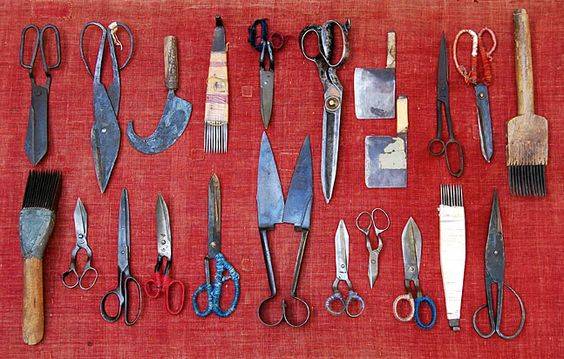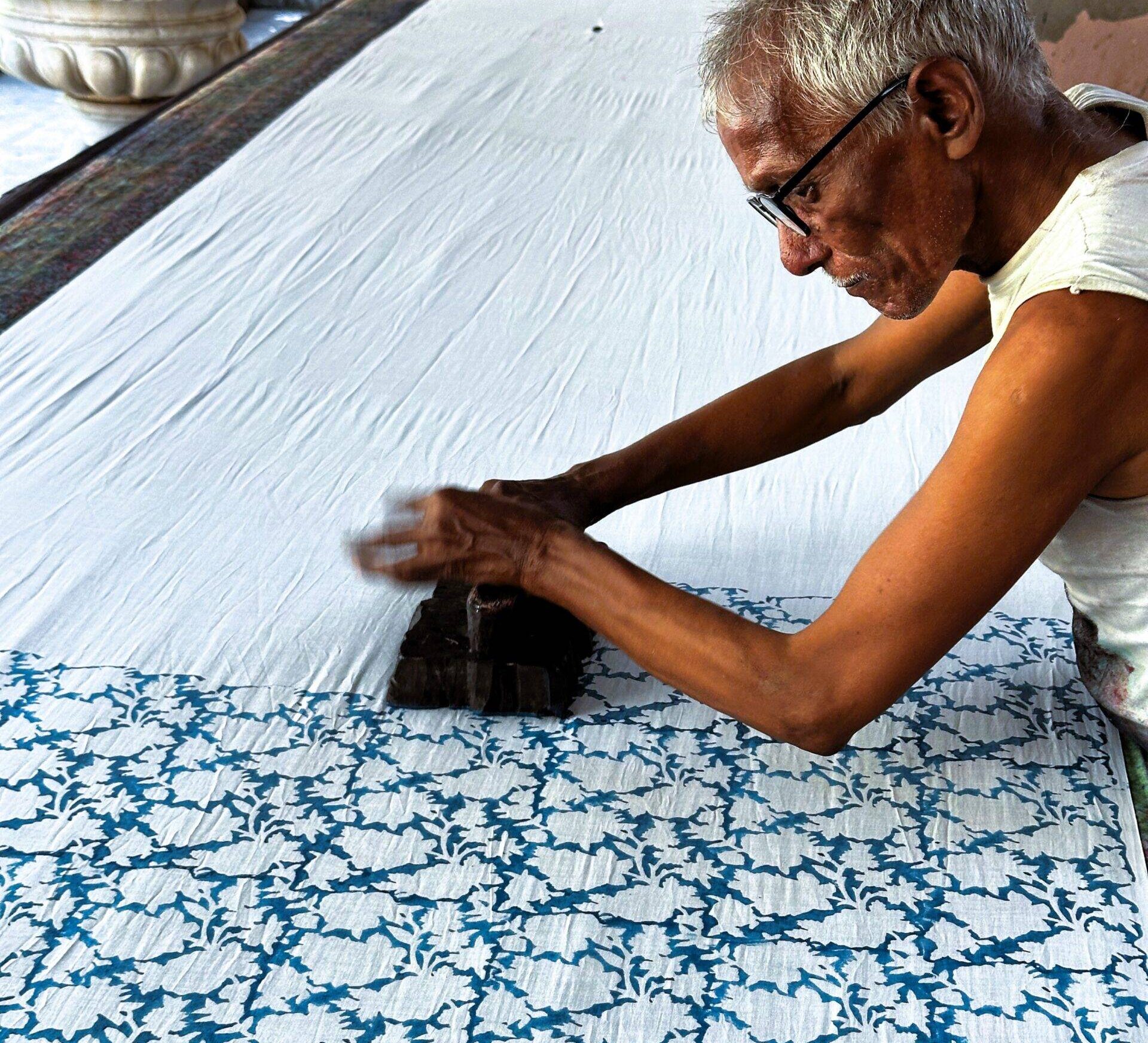Introduction
In the serene valleys of Kashmir, the tradition of crafting Hand-Knotted Carpets, known locally as “Kaleen,” has been passed down through generations. These carpets are not just pieces of decor but a testament to the rich cultural and artistic heritage of the region. Join us as we delve into the fascinating world of Kashmir’s Hand-Knotted Carpets, exploring their history, craftsmanship, and cultural significance.
A Journey Through Kashmir’s Rich Textile Heritage
Kashmir’s textile heritage is a tapestry of diverse influences, blending Persian, Central Asian, and indigenous Kashmiri traditions. Hand-Knotted Carpets from this region are renowned for their intricate designs and superior quality, representing centuries of skilled artistry and cultural fusion.
Unveiling the Artistry Behind Kashmir’s Hand-Knotted Carpets
The creation of Hand-Knotted Carpets in Kashmir is an art form that demands patience, precision, and passion. Each carpet is a masterpiece, reflecting the unique skills and creativity of the weavers. This artistry is not just about weaving threads but about telling stories through patterns and colors.
Historical Background
The Origins of Kaleen: A Historical Perspective
The history of Kashmir’s Hand-Knotted Carpets dates back to the 15th century when Sultan Zain-ul-Abidin invited Persian artisans to Kashmir. These artisans introduced the art of carpet weaving, which was then embraced and adapted by the local craftsmen, leading to the birth of the distinctive Kashmiri Kaleen.
From the Silk Route to Modern Homes: The Evolution of Kashmir’s Carpets
The Silk Route played a significant role in the evolution of Kashmir’s carpets, facilitating the exchange of materials, techniques, and designs. Over time, Kashmiri carpets have evolved from royal possessions to cherished household items, appreciated for their beauty and craftsmanship across the globe.
Craftsmanship and Techniques
The Intricate Art of Hand-Knotting: Techniques and Tools
Hand-knotting a carpet involves a meticulous process using a loom, where each knot is tied by hand, often taking months to complete. The tools of the trade include the loom, knives, scissors, and the “tali” (a wooden comb-like tool). The result is a dense, durable carpet with intricate patterns.
Mastering the Loom: A Day in the Life of a Kashmiri Carpet Weaver
A Kashmiri carpet weaver’s day begins at dawn, filled with the rhythmic motion of knotting threads. The weaver’s skill lies in maintaining consistent tension and accuracy, transforming a plain loom into a vibrant piece of art. Every knot tied is a step towards creating a timeless masterpiece.
Cultural Significance
The Cultural Importance of Kaleen in Kashmiri Society
In Kashmiri society, Hand-Knotted Carpets hold immense cultural significance. They are often a part of dowries, family heirlooms, and gifts for special occasions. These carpets symbolize wealth, tradition, and the region’s artistic heritage.
Symbolism and Stories Woven into Kashmir’s Carpets
Each design and motif in a Kashmiri carpet tells a story or symbolizes a particular theme, such as nature, spirituality, or daily life. These patterns are not merely decorative but carry deep cultural meanings and historical narratives.
Materials and Patterns
From Wool to Silk: Materials Used in Kashmiri Carpets
Kashmiri Hand-Knotted Carpets are crafted from various materials, including wool, silk, and a blend of both. The choice of material affects the texture, durability, and sheen of the carpet, with silk being prized for its luxurious feel and intricate detailing.
Decoding the Patterns: Common Designs and Their Meanings
Common designs in Kashmiri carpets include floral motifs, paisleys, and geometric patterns. Each pattern has a meaning; for example, the chinar leaf symbolizes the changing seasons, while floral motifs often represent life and growth.
Economic Impact
The Economic Role of Carpet Weaving in Kashmir
Carpet weaving is a significant economic activity in Kashmir, providing livelihoods to thousands of families. The industry supports local economies and helps preserve traditional crafts in the face of modernization.
Supporting Local Artisans: The Economics of Kaleen Craftsmanship
Purchasing a Kashmiri Hand-Knotted Carpet not only brings home a piece of art but also supports the artisans who pour their heart and soul into creating these masterpieces. This economic support is crucial for sustaining the traditional craft.
Preservation and Challenges
Preserving a Tradition: Challenges Faced by Modern Weavers
Modern weavers face numerous challenges, including competition from machine-made carpets, fluctuating raw material costs, and the threat of cultural dilution. Efforts are needed to preserve this art form and support the artisans who keep it alive.
Sustainable Practices in Kashmiri Carpet Making
Sustainable practices in carpet making include using natural dyes, organic materials, and ethical labor practices. These efforts ensure that the art of carpet weaving remains environmentally friendly and socially responsible.
Global Recognition
Kashmir’s Carpets on the World Stage: Global Appreciation and Demand
Kashmiri Hand-Knotted Carpets have garnered global recognition for their quality and artistry. They are highly sought after in international markets, symbolizing luxury and elegance.
From Local to Global: How Kashmiri Carpets Have Won International Acclaim
The journey of Kashmiri carpets from local craft to global acclaim is a testament to their timeless appeal and unmatched craftsmanship. Exhibitions, fairs, and international trade have played a crucial role in bringing these carpets to the world stage.
Buying Guide
How to Choose an Authentic Kashmiri Hand-Knotted Carpet
When choosing an authentic Kashmiri Hand-Knotted Carpet, look for the quality of the weave, the material, and the intricacy of the design. Genuine Kashmiri carpets are often accompanied by a certificate of authenticity.
Tips for Maintaining and Caring for Your Hand-Knotted Carpet
Proper care and maintenance can extend the life of your Hand-Knotted Carpet. Regular vacuuming, professional cleaning, and avoiding direct sunlight will help preserve the carpet’s beauty and integrity.
Personal Stories
Voices of the Weavers: Personal Stories from Kashmir
The weavers of Kashmir have fascinating stories to tell. Their dedication, skill, and passion for their craft are evident in every knot and design. These personal stories add a human touch to the exquisite carpets they create.
Collector’s Corner: Interviews with Carpet Collectors and Enthusiasts
Carpet collectors and enthusiasts share their experiences and the joy of owning Kashmiri Hand-Knotted Carpets. Their insights highlight the cultural and aesthetic value of these carpets, making them prized possessions.
Conclusion
Why Kashmir’s Kaleen Remains Timeless
Kashmir’s Kaleen remains timeless due to its unmatched craftsmanship, intricate designs, and deep cultural significance. These carpets are more than just floor coverings; they are pieces of art that connect us to a rich heritage.
Bringing a Piece of Kashmir into Your Home
Owning a Kashmiri Hand-Knotted Carpet is like bringing a piece of Kashmir into your home. It’s an investment in beauty, tradition, and timeless elegance.
Customer FAQs
Q: How can I verify the authenticity of a Kashmiri Hand-Knotted Carpet? A: Look for a certificate of authenticity, inspect the quality of the weave, and consult trusted sellers.
Q: Are Kashmiri carpets durable? A: Yes, when properly cared for, Kashmiri carpets can last for generations.
Q: What materials are used in Kashmiri carpets? A: Common materials include wool, silk, and a blend of both, each offering different textures and qualities.
Q: How do I clean and maintain my carpet? A: Regular vacuuming, professional cleaning, and avoiding exposure to direct sunlight will help maintain your carpet’s condition.
Q: Why are Kashmiri carpets considered valuable? A: Their value lies in the intricate hand-knotting process, high-quality materials, and rich cultural heritage.
4o


